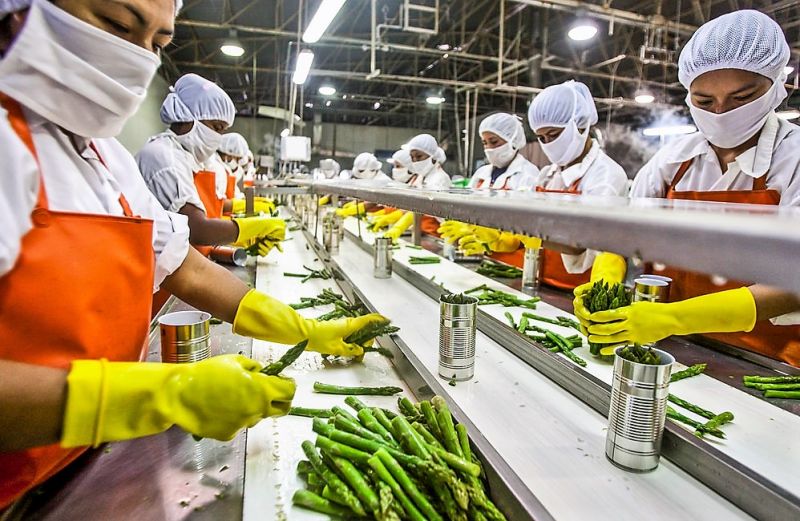How Food Processors can Successfully Manage Water and Utilities
Published on by Water Network Research, Official research team of The Water Network in Business
In food processing facilities, production demands make energy and water efficiency a big challenge, which means processors have to get creative when they’re trying to improve their utilities management, save money and meet corporate sustainability goals.
 Measure twice, cut (costs) once
Measure twice, cut (costs) once
You’ve probably heard it a million times, and for good reason: You can’t manage what you don’t measure.
You more than likely apply this concept to all aspects of your production, even if you don’t put it in those terms. You measure how many of a particular product come off of a production line damaged during a run to make sure you’re within an acceptable failure rate. You measure how much capacity you have during peak times and how much wiggle room you have to expand production if necessary. You measure the number of employees you have on a production line, how many hours they work and how few you can get by with if circumstances demand it.
You measure all those things, so that you can manage them, and your utilities should be no different. It starts with looking at your utility bills and asking two questions:
- Why are we spending this much money on utilities?
- What can we do to reduce the amount we spend?
That sounds pretty simple, and it is. But that’s just the starting point for more complex questions, says Steve Tapper, food and beverage industry consultant for U.S. Water. “In most cases, [processors] know water in and water out, and not per their applications,” he says. “Most plants are considerably off what the minimum requirements are and what the maximum requirements are, but they don’t know that, because they don’t have true measurement.”
This applies to energy as well. In both cases, it’s easy to find out the top-line number of how much electricity, water and natural gas you’re using. But how much electricity are your conveyor belts using? How much water are you using for washdowns? How much natural gas are your ovens and dryers using?
When you can answer those questions, then you have information that you can really use to start finding efficiencies. Older equipment was a “black box,” says Phil Kaufman, energy technology manager for Rockwell Automation. You generally couldn’t pull any information from it on how much energy it was using, so you couldn’t break down energy usage by each step of the production process.
Perspectives and priorities
Identifying and tackling those areas of emphasis may seem daunting, and it can be overwhelming to think about how many individual components there are in a production plant and how much electricity, natural gas or water each one might be using. But if you start with good data, it becomes a lot easier to make an evaluation of how efficient a process is and how you can improve upon it.
For example, regulations require a certain amount of fresh water to be used per bird processed in poultry plants. Do you have the data on how close you are to that standard? You obviously can’t be below it, but you don’t have to be 25 percent above it. Or if a kill step requires a temperature of 180°F, are you going to 180°F or 181°F, or even higher than that? If you can nail down how close you are to the goals you have to hit, then you can determine if you’re hitting them in the most efficient manner possible. One extra degree in an oven may not seem like a big difference, but start thinking about how much extra energy it requires over an entire production shift, work week, month or year, and it adds up.
Another element of the regulatory aspect is requirements for elements, such as discharge water, especially when it comes to materials in the water. Local, state and federal regulations all require water to contain “less than X” amount of different materials, and ensuring water doesn’t break those rules can require energy investments.
Investing in efficiency
New equipment can offer huge advantages in terms of not only the information it can provide, but in its operating efficiency. But that leads to a bit of a conundrum for food processors: If you’re buying a piece of equipment that has an expected lifespan of 15 or 20 years, will it still be efficient as it approaches the end of its service time?
Operational efficiency
Equipment, data collection, measurement and strategy are all important, but any or all of them can be ruined by inefficient operations. To go back to the office building example, giving employees access to the thermostats may cut down on complaints, but it probably won’t do your heating bill any favors.
A similar concept applies to plant operations. Automation and controls can help by managing elements of the process efficiently, but operators need flexibility to do their jobs. To keep that from ruining your best-laid plans, you need to evaluate how operators do their jobs not only from a production-efficiency standpoint, but from a resource-efficiency standpoint as well, says Kaufman.
Read full article at Food Engineering
Media
Taxonomy
- Water
- Energy
- Energy
- Food safety
- Food Processing